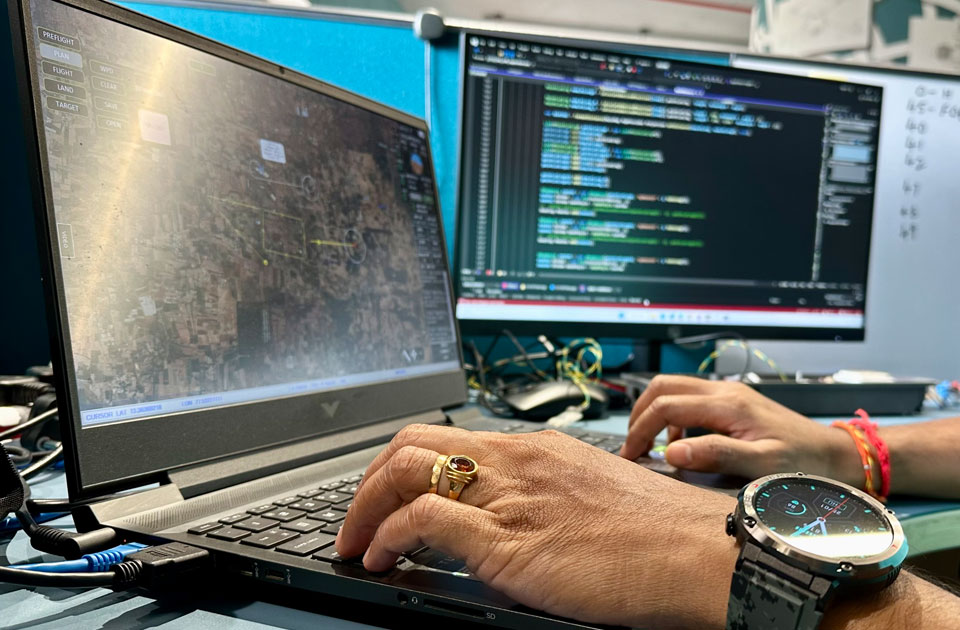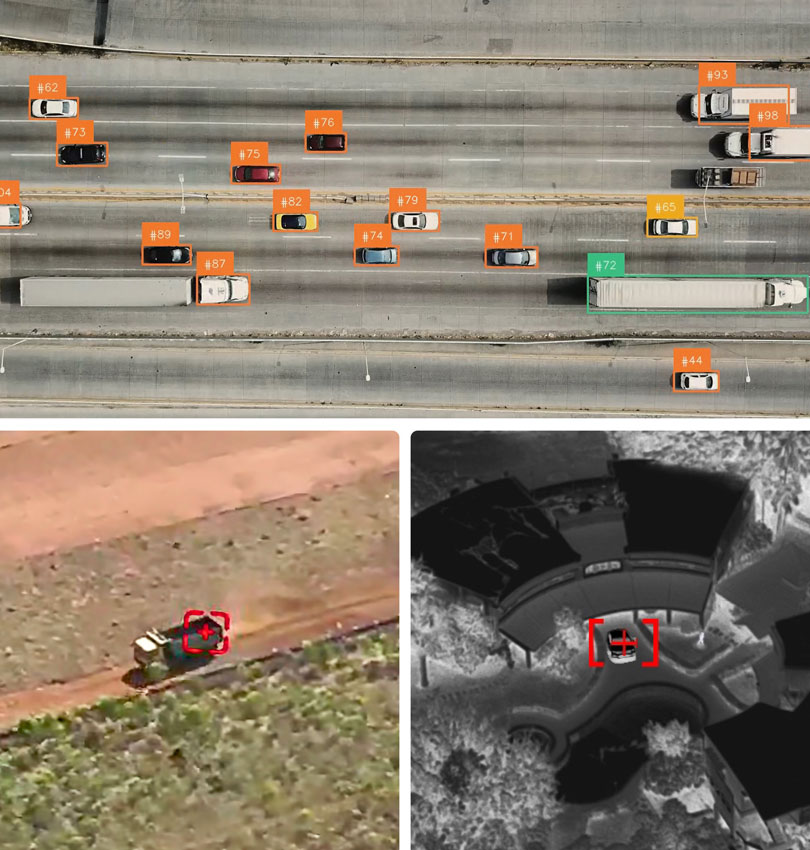On board sensors with cutting edge technology are integral to the company’s aerial systems. To enhance the visual depth of the imagery, the systems are equipped with cameras that capture detailed data for real-time processing and analysis.

Software Development and Hardware Integration
In this cutting edge industry, the synergy between software and hardware teams help push the boundaries of what our remarkable machines can achieve. Synchronous collaboration between both the domains is critical for the success of our product.
Benefiting from in-house expertise in both hardware and software domains enables precise customisation of our systems to meet specific end-user requirements. Our hardware and software engineers collaborate from the project's inception, jointly designing and defining system requirements and architecture, considering both software and hardware aspects. This alignment ensures consistency with the company's vision and goals.
The software team creates rules for how the drone talks to its hardware parts (like sensors). While the hardware engineers make sure our aerial platform’s physical components work well with these rules. Together, they ensure smooth communication between software and hardware.
Making the drone fly safely is a joint effort. Hardware experts optimize things like motors, while software folks handle control logic. They also work together on safety features, like backup systems and fail-safes mechanism and continue collaborating on updates and fixing any issues that pop up long after the drone is built.
Incorporating Artificial Intelligence (AI)
Software engineers leverage machine learning and AI techniques to enable our UAVs to learn and adapt to different environments, tasks and scenarios. Training the AI models in Object Detection and Recognition, Autonomous Navigation, Flight Behavioural Analysis, Anomaly Detection, Predictive Analytics, Real-time Monitoring and Alerts, effectively enabling the man-in-loop decision-making processes.
Developing communication protocols and software interfaces is critical for enabling seamless communication between our airborne systems, ground control stations, and other networked devices. This ensures efficient data exchange, remote control, and real-time monitoring of flight operations.
Creation of AI algorithms that enable drones to adjust flight behavior based on changing operational/situational scenarios and taking cues from environmental conditions for optimal performance ensure that our UAVs can dynamically adapt to changing circumstances.
Developing intelligent software for data management and analysis is crucial for processing, storing and analysing the vast amounts of data collected by autonomous drones during missions. This includes tools for data visualization, anomaly detection, and generating actionable insights for users.
These critical aspects of software development are essential for the design, operation, and continuous improvement of autonomous system capabilities in various applications, including surveillance, mapping, delivery and inspection.



